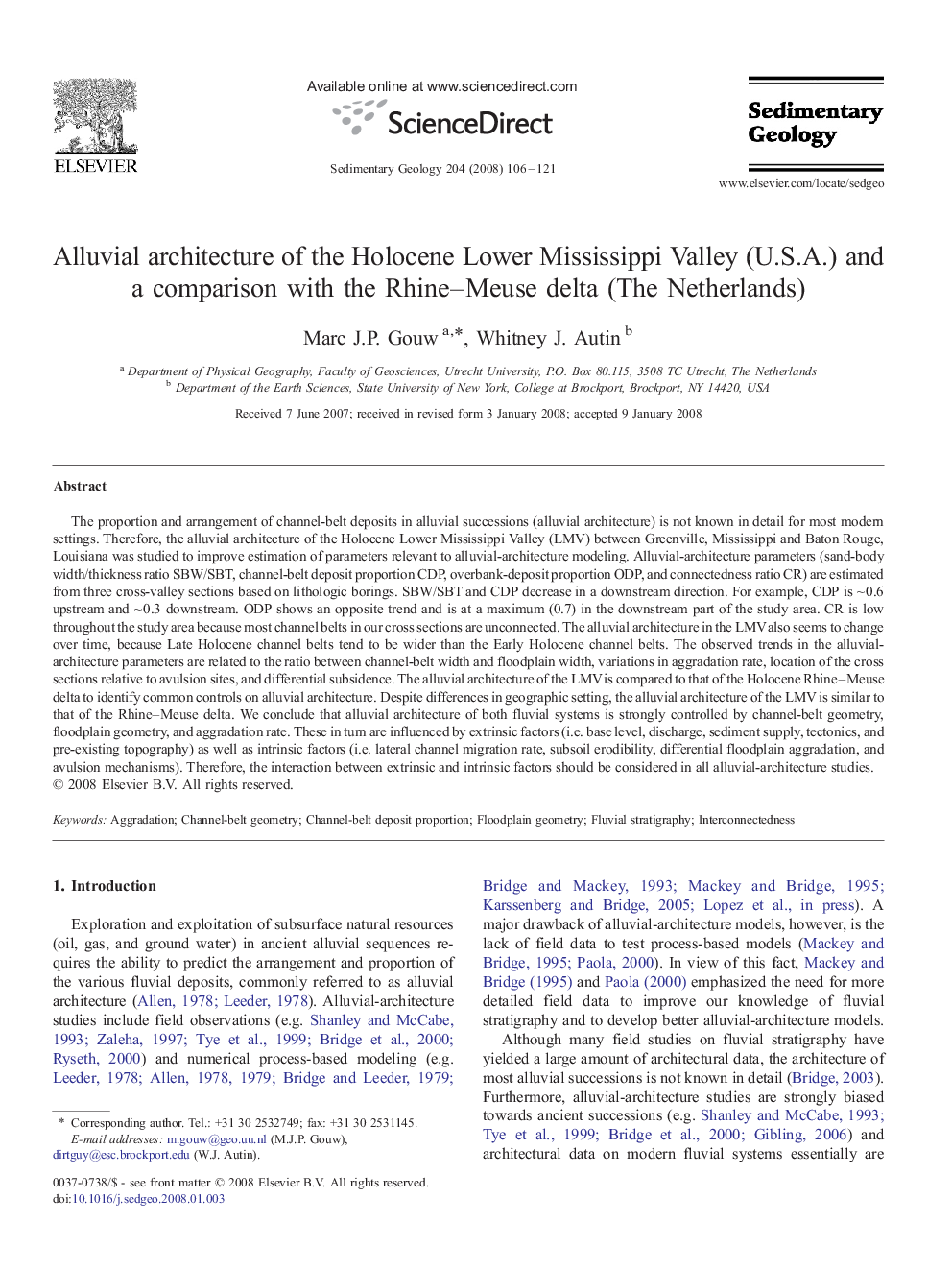| کد مقاله | کد نشریه | سال انتشار | مقاله انگلیسی | نسخه تمام متن |
|---|---|---|---|---|
| 4690671 | 1636158 | 2008 | 16 صفحه PDF | دانلود رایگان |

The proportion and arrangement of channel-belt deposits in alluvial successions (alluvial architecture) is not known in detail for most modern settings. Therefore, the alluvial architecture of the Holocene Lower Mississippi Valley (LMV) between Greenville, Mississippi and Baton Rouge, Louisiana was studied to improve estimation of parameters relevant to alluvial-architecture modeling. Alluvial-architecture parameters (sand-body width/thickness ratio SBW/SBT, channel-belt deposit proportion CDP, overbank-deposit proportion ODP, and connectedness ratio CR) are estimated from three cross-valley sections based on lithologic borings. SBW/SBT and CDP decrease in a downstream direction. For example, CDP is ~ 0.6 upstream and ~ 0.3 downstream. ODP shows an opposite trend and is at a maximum (0.7) in the downstream part of the study area. CR is low throughout the study area because most channel belts in our cross sections are unconnected. The alluvial architecture in the LMV also seems to change over time, because Late Holocene channel belts tend to be wider than the Early Holocene channel belts. The observed trends in the alluvial-architecture parameters are related to the ratio between channel-belt width and floodplain width, variations in aggradation rate, location of the cross sections relative to avulsion sites, and differential subsidence. The alluvial architecture of the LMV is compared to that of the Holocene Rhine–Meuse delta to identify common controls on alluvial architecture. Despite differences in geographic setting, the alluvial architecture of the LMV is similar to that of the Rhine–Meuse delta. We conclude that alluvial architecture of both fluvial systems is strongly controlled by channel-belt geometry, floodplain geometry, and aggradation rate. These in turn are influenced by extrinsic factors (i.e. base level, discharge, sediment supply, tectonics, and pre-existing topography) as well as intrinsic factors (i.e. lateral channel migration rate, subsoil erodibility, differential floodplain aggradation, and avulsion mechanisms). Therefore, the interaction between extrinsic and intrinsic factors should be considered in all alluvial-architecture studies.
Journal: Sedimentary Geology - Volume 204, Issues 3–4, 20 February 2008, Pages 106–121